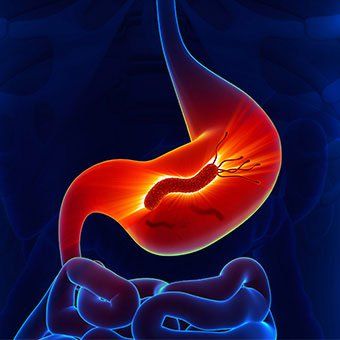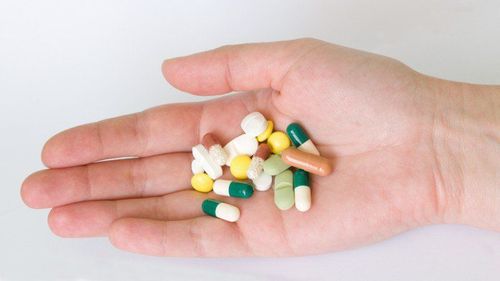This is an automatically translated article.
All drugs have side effects, including antibiotics. It occurs as an unwanted reaction during treatment. Side effects of antibiotics can range from mild allergic reactions to serious and debilitating side effects. When used appropriately with a doctor's guidance, most antibiotics are relatively safe with few side effects.1. Antibiotics
Antibiotics are prescription drugs that help treat bacterial infections. Some common infections that are treated with antibiotics include bronchitis, pneumonia, and urinary tract infections. Antibiotics work by killing the bacteria causing the infection or by stopping the bacteria from growing. develop and multiply.
Antibiotics only work to treat bacterial infections. It is not effective for infections caused by viruses, including: common cold, runny nose, cough and bronchitis.
The use of antibiotics should consult a doctor whether to use them or not. Overuse and indiscriminate use of antibiotics can lead to antibiotic resistance. And that means antibiotics will decrease or no longer work in the future.
2. Common side effects of antibiotics
There are many different groups or classes of antibiotics. They both have side effects and affect both men and women in the same way.2.1. Stomach pain
Many antibiotics cause stomach upset or gastrointestinal side effects. These may include: nausea or vomiting, cramps, diarrhea. Macrolide antibiotics, cephalosporins, penicillins, and fluoroquinolones can cause more stomach upset than other antibiotics.
If you have this condition, see your doctor for advice on whether to take antibiotics with food. Eating can help reduce stomach side effects from some antibiotics, but amoxicillin and doxycycline (Doryx). However, this approach does not work with all antibiotics. Some antibiotics, such as tetracycline, must be taken before eating.

Kháng sinh có tác dụng tiêu diệt, ngăn chặn sự phát triển của một số loại vi khuẩn nhất định
2.2. Sensitivity
If you are taking an antibiotic such as tetracycline, your body may become more sensitive to light. This effect can make light appear brighter in the patient's eyes. It can also make the skin more susceptible to sunburn. This sensitivity should disappear after stopping the antibiotic.If you experience this side effect, take some precautions to stay safe and comfortable when going out in the sun such as: Apply sunscreen to block UVA and UVB rays, wear extra long clothes for protection or use more hats, sunglasses.
2.3. Fever
Fever is a common side effect of many medications including antibiotics. Fever can occur as an allergic reaction to the medication or as a bad side effect. Fever can occur with any antibiotic, and they are common with: beta-lactams, cephalexin, minocycline, sulfonamides.If fever while taking antibiotics may resolve on its own. But if the fever doesn't go away after 24-48 hours, see your doctor for advice on using an over-the-counter pain reliever like acetaminophen or ibuprofen to help bring the fever down. In case of fever above 40 degrees, skin rash or difficulty breathing, call your doctor or call an ambulance immediately.
2.4. Vaginal yeast infection
Antibiotics reduce the amount of beneficial bacteria such as lactobacillus in the vagina. This type of bacteria can help get rid of some naturally occurring fungi like Candida. When the natural balance is in favor of Candida overgrowth, a yeast infection can occur.Symptoms of vaginal yeast infection include: Vaginal itching, burning when urinating or having sex, swelling around the vagina, pain during sex, rash... Sometimes white discharge can also be seen. opaque.
For a simple yeast infection your doctor may prescribe an antifungal cream such as a topical ointment or an oral tablet. But for severe or complicated yeast infections, your doctor will have to prescribe a longer treatment and follow-up.
2.5. Teeth change color
Antibiotics such as tetracycline and doxycycline can cause permanent tooth staining in children. This effect mainly occurs in children under 8 years of age.
If pregnant women take these medicines, their children's teeth may also become discolored.
3. Serious side effects of antibiotics
3.1. Allergic reaction
Allergic reactions are possible with any drug, including antibiotics. Some allergic reactions can be mild, but others can be serious. If you are allergic to an antibiotic, you will react immediately after taking it. These symptoms include difficulty breathing, hives, and swelling of the tongue or throat.
If you develop hives, stop taking the medicine and call your doctor for advice. If swelling or difficulty breathing, stop taking the medicine and call an ambulance right away.

Thuốc kháng sinh có thể gây dị ứng trên da như: phát abn, nổi mề đay
3.2. Stevens-Johnson syndrome
This is an extremely rare but serious condition of the skin and mucous membranes. It often occurs with beta-lactam antibiotics and sulfamethoxazole.
Usually the syndrome also begins with flu-like symptoms. But then the blisters and rash start to spread. The risk of developing this syndrome is high in people who have weakened immune systems or have had it or have a family history of it.
3.3. Blood reaction
Some antibiotics can cause blood changes. For example, leukopenia can lead to an increased risk of blood infections. Or another change is a low level of platelets, which can cause bleeding, bruising, and slow blood clotting.
3.4. Heart problems
Some antibiotics can cause heart problems such as irregular heartbeat or low blood pressure. The antibiotics commonly associated with these side effects are erythromycin and some fluoroquinolones such as ciprofloxacin. The antifungal terbinafine can also cause this problem. Therefore, if you have heart disease, tell your doctor before starting any antibiotic. This information will help your doctor choose the right antibiotic for treatment.
3.5. Convulsions
It is very rare to take antibiotics to cause a seizure, but it can happen. Seizures are more common with the antibiotics ciprofloxacin, imipenem, and cephalosporins such as cefixime and cephalexin.
If you have epilepsy or a history of seizures, be sure to tell your doctor before starting any antibiotics.
Antibiotics are drugs that treat infections by killing bacteria or other organisms or slowing their growth. Use antibiotics appropriately with a doctor's guidance, most antibiotics are relatively safe with few side effects. It also reduces the risk of antibiotic resistance in the future.
Customers can directly go to Vinmec Health system nationwide to visit or contact the hotline here for support.
Articles refer to sources: cdc.gov, healthline.com, nhs.uk, drugs.com, webmd.com
MORE:
What are antibiotics? How to limit antibiotic resistance? What is antibiotic resistance?













